
views
Identifying the Verse in a Song
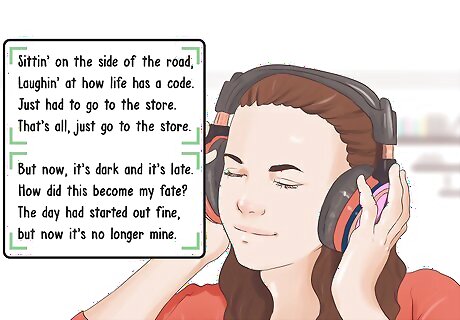
Look for lines that have been grouped or sectioned together. In a song, the verses will be grouped or sectioned into four or more lines, with a blank space between each grouping. If you are looking at a song that has been written down, notice groupings of at least four to five lines in sections. These are often the verses in the song. The verses will have different content from verse to verse but they are often the same length throughout the song. For example, you may have one verse that talks about love and one verse that talks about sadness, but both verses will be five to six lines long.
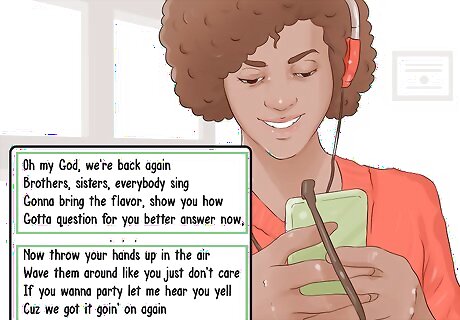
Listen for sections that have the same melody but different words. Listen to the song to help you identify the verses. Verses will have the same melody but contain different words. The verses may also follow the same rhythm or pattern, though the lyrics or words are different from verse to verse. You may notice the same musical patterns are playing for each verse, or the same beat, but the lyrics changes from verse to verse. Listen closely to the song as it plays to identify the verses. For example, in the song “Everybody” by the Backstreet Boys, the first verse starts as “Oh my God we’re back again/brother, sister’s everybody sing.” The second verse starts as, “Now throw your hands up in the air/And wave ‘em around like you just don’t care.” Both verses have the same melody but different lyrics.
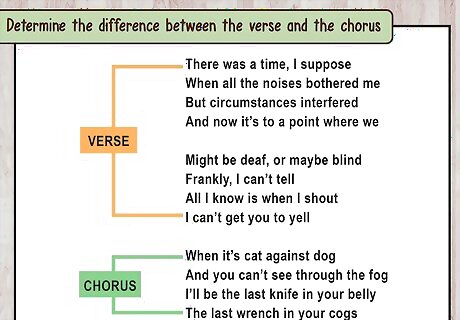
Determine the difference between the verse and the chorus of the song. Another way you can identify the verse is a song is to distinguish it from the chorus in the song. The chorus is often shorter than the verse and has the same melody every time it is played. The chorus also contains the same lyrics every time. Often, the title of the song is based on the chorus of the song. This is very different than the structure of a verse. For example, you may have a chorus in a song called “Quit Playing Games With My Heart” that goes, “Quit playing games with my heart/Before you tear us apart (my heart).” The chorus will repeat three to four times in the song with the same melody and lyrics. The verses will have the same melody but different lyrics each time they appear in the song.
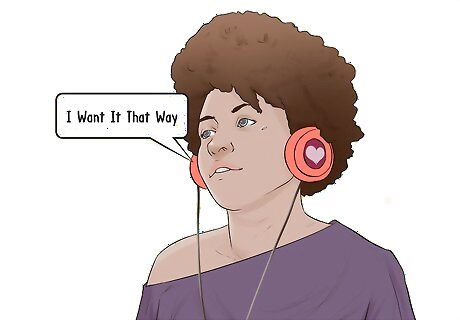
Identify the pattern of the song. Most popular songs follow a standard pattern: verse, chorus, verse, bridge, and chorus. Listen to the song and identify each section of the pattern in the song. Notice if the song follows the most common pattern, with the verse appearing first and then between the chorus and the bridge. This can help you identify the verses in the song. For example, the song "I Want It That Way" by the Backstreet Boys follows the pattern: verse, verse, chorus, verse, chorus, bridge, verse, chorus. If the song does not adhere to the most common pattern, you can still plot out the pattern based on your knowledge of what a verse is and what a chorus is. For example, you may have a song that has an introductory section, followed by the verse, then the chorus, then a bridge, a final verse, and the chorus.
Determining the Verse in a Poem
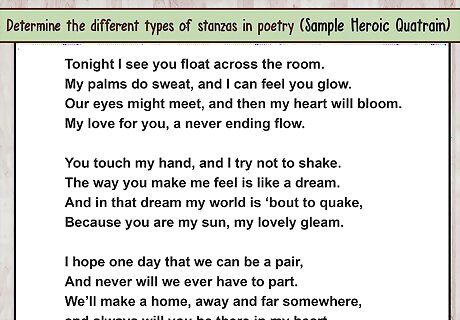
Determine the different types of stanzas in poetry. In poetry, verses are called stanzas. Stanzas typically have four or more lines with a fixed length, meter, or rhyme scheme. Stanzas are similar to a paragraph in an essay or in prose. Stanzas often appear as the first section in a poem. There are many different types of stanzas, including: Couplets, where there are stanzas of two rhyming lines. Tercets, where there are stanzas of three lines that may or may not rhyme. Quatrains, where there are stanzas of four lines that may or may not rhyme. Cinquain, where there are stanzas of five lines that may or may not rhyme. Sestet, where there are stanzas of six lines that may or may not rhyme. Septet, where there are stanzas of seven lines that may or may not rhyme. Octave, where there are stanzas of eight lines that may or may not rhyme.
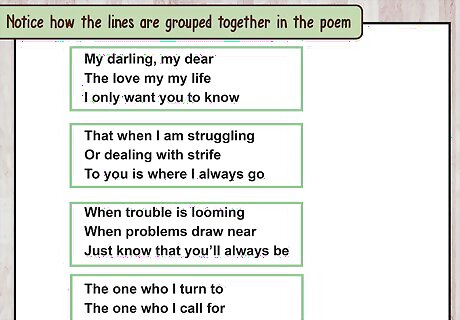
Notice how the lines are grouped together in the poem. Stanzas are often grouped together in a poem and set off by a space. Look over the poem and notice how the lines are grouped together. Count the number of lines in each grouping to identify each stanza and determine how many lines are in each stanza. This can help you identify the stanzas in the poem and the structure of the poem. If the lines are grouped together in sets of two, each grouping will be a stanza of two lines. A poem with stanzas of two lines that rhyme is called a couplet. For example, a couplet would be “True wit is nature to advantage dress’d;/What oft was thought, but ne’er so well express’d," from "Essay on Criticism" by Alexander Pope.
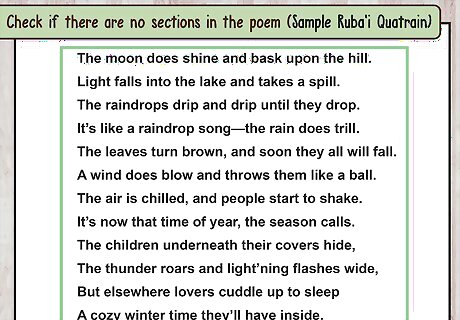
Check if there are no sections in the poem. Some poems have no sections and appear as one long grouping of lines. In this case, the entire poem would be a stanza. This is a popular technique in modern and contemporary poetry. For example, the poem “America” by Walt Whitman consists of one stanza that is six lines long.
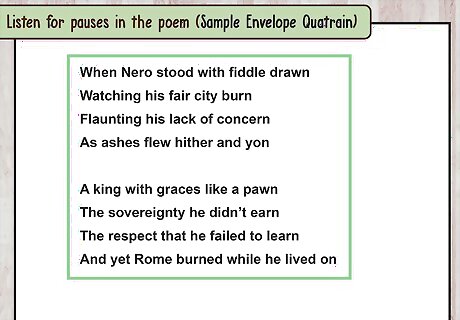
Listen for pauses in the poem. The term “stanza” means “stopping place” in Italian. Each stanza will comprise of its own unit in a poem and when read out loud, there is often a paused placed between each stanza. If you know the poem has been grouped a certain way on the page, read it out loud and listen for pauses between each group of lines. Based on the pauses, you should be able to identify the stanzas in the poem. For example, if you were reading a quatrain poem, you would pause every four lines as the stanzas would consist of four lines each.



















Comments
0 comment